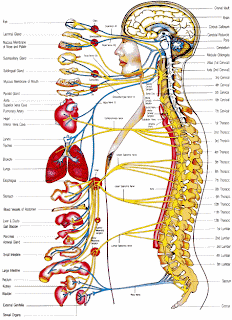 Did you know that Marie Curie (photo) was banned from her academic laboratory until after she won her second Nobel Prize? Or that research funding to support female scientists was withheld by the Federal funders of the Stanford Linear Accelerator Center during the 1960’s. Or that as recently as 2005, the president of Harvard, explained that there are so few tenured women scientists and engineers because of innate gender differences in abilities?
Did you know that Marie Curie (photo) was banned from her academic laboratory until after she won her second Nobel Prize? Or that research funding to support female scientists was withheld by the Federal funders of the Stanford Linear Accelerator Center during the 1960’s. Or that as recently as 2005, the president of Harvard, explained that there are so few tenured women scientists and engineers because of innate gender differences in abilities?It seems that although some progress has been made, women in science still face some serious obstacles to realizing their career goals. That’s the message of several reports summarized in this month’s Academe (Bulletin of the American Association of University Professors) article entitled: “Why Are We Still Worried about Women in Science?”
In many fields, women have reached parity with men in the percentages of degrees received in science, engineering, technology, and mathematics (STEM). In the U.S., women even earn more bachelor’s and master’s degrees than men.
However, the findings indicate a problem when one considers how many women actually make it into senior science positions: “Despite grades and other academic attainments equal to or surpassing those of the men who remain in STEM fields, more women than men leave science and engineering. As a result, few women are in senior or leadership positions in the STEM workforce.”
An Example of the Numbers:
Percentage of Doctoral Degrees (Biology) Awarded to Women: 46.2%
Percentage of Full Professors Who Are Female (Biology & Life Sciences): 19%
Barriers: Some are new, but the AAUP article states that “issues from thirty years ago remain, appearing today in somewhat different language, behaviors, and structures. “ One interesting aspect mentioned in this article was the effect of being half of a dual-career couple. A 2008 report, Dual-Career Couples: What Universities Need to Know, indicates that 83 percent of women scientists have academic partners who are also scientists (compared to 54 percent of men). For many such women, their dreams and aspirations are put on hold or abandoned in favor of their husband's career.
Why Do Women Leave Science? The data indicate that “women outperform men academically, receive more awards, and have higher graduation rates and better attitudes toward education”, but that women leave the STEM workforce soon after beginning academic employment. Why? The reports point to two factors: the need to balance career and family and lack of professional networks. Several studies have documented that lack of networking and mentoring contributes to women leaving science. They have fewer graduate and postdoctoral students and less diverse networks compared to male counterparts.
Solutions:
1. Grant-making organizations need to allow all applicants to allocate funds for family care, including child and elder care.
2. University departments should train students in project management, leadership, and business skills, including proposal writing.
3. Enforce existing anti-discrimination laws (6th, 7th, 9th titles of the Civil Rights Act). A Study on the Status of Women Faculty in Science at MIT (1999) reported that male faculty were give greater resources (lab space, salary supplements, start-up packages, university funding, and prize nominations) than female faculty.
4. Expand and redirect the National Science Foundation’s ADVANCE program.
5. Aggressively promote qualified women to science advisory boards, journal editorial boards, and science policy positions.
6. Reject the portrayal of women scientists as a special interest group. Women earn more than half of the undergraduate degrees in science, but are not achieving their goals because of cultural biases and outdated policies.




